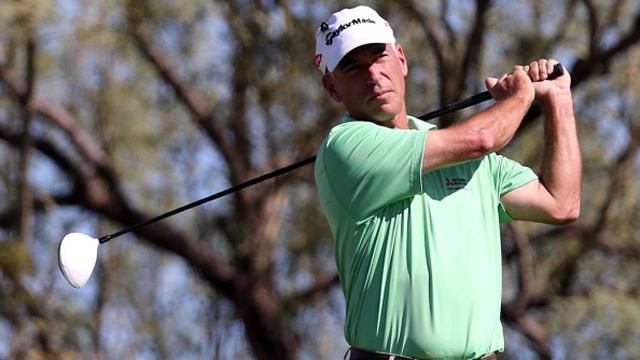NEWS
Eubanks: Riviera Far From Obsolete

Funny how we keep hearing that technology has made classic courses obsolete, that gems of a bygone era can no long withstand the onslaught of space-age golf balls struck by giant drivers swung by finely-tuned athletes.
Then the tour heads to Riviera, a 1922 masterpiece that fits so perfectly into the Southern California landscape that it looks more found than made.
Far from being obsolete, Riviera is still considered one of the best tests in the world, a thinking-man’s golf course that has yielded winners of all shapes and sizes. Unlike Augusta National, which has become a bomber’s bonanza, or Colonial, which is a putter’s paradise, Riviera’s list of past winners reads like a who’s who of the game with no discernible bias.
Just look at the multiple winners: Lloyd Mangrum won four times at Riviera; Ben Hogan won the L.A. Open there three times and the U.S. Open once. Arnold Palmer won three times, including back-to-back wins in 1966 and 1967. Other back-to-back winners include PGA Hall of Fame member Paul Harney, Corey Pavin, Mike Weir, and Phil Mickelson. Billy Casper, Tom Watson and Fred Couples won two out of three, and Sam Snead won there twice.
You would be hard pressed to find a more eclectic group of champions anywhere. Riviera has rewarded short hitters, medium hitters and the longest hitters in the game; guys known for their precision iron play, scrappy scramblers, and folks who built their careers on the greens.
Dave Stockton and George Archer, two of the greatest putters of the modern era, won there, but so did Johnny Miller who handled the putter like it was a poisonous snake. Hogan won there by never missing a fairway, while Mickelson won barely hitting any.
“That is a sign of a great golf course,” Pavin said. “You have all different types of winners and all different styles of play that can win. The fact that it doesn’t favor one style of play over another is what makes Riviera fantastic.”
It is one of Pavin’s favorites, but he is far from alone. Mickelson praises the place, as does Ben Crenshaw and a host of others.
“They’ve added a little bit of length over the years, but not a tremendous amount,” Pavin said. “But the real defense of the golf course is the greens complexes. It’s not a golf course you can overpower. It’s about placement. If you miss in the right place you have a chance to get up and down, but if you don’t, you can have some problems. That’s part of the strategy. (Architect) George Thomas did a great job with that. When you build a golf course like that, it will hold up over time.”
Nowhere is the genius of Riviera more evident than on the 10th hole, a non-descript 315-yard par-four with what appears, to the untrained eye, to be a flat green. It is a hole Jack Nicklaus called “one of the greatest short par fours in the world.”
“It’s a hole that tests your ego and your instincts,” LPGA Hall of Famer and Riviera member Amy Alcott said. “As a player, I always appreciated the genius of some of the older designers, and now, as a golf course designer (myself) I really love the subtlety and strategy that goes into wonderful older holes like the tenth at Riviera. They might need a face-lift, but they never need an overhaul. It’s funny, because I’m talking to a lot of players who are now in the architecture business, and they all go back to the classic old courses when discussing their philosophy. And all of them will, invariably, mention a short hole, especially a short par four somewhere in the conversation.”
The genius of the drivable tenth was on full display in last year’s Northern Trust Open during the three-way playoff between Mickelson, Keegan Bradley and eventual winner, Bill Haas.
“All three of them tried to drive it onto the green and all were easily capable of doing it,” Pavin said. “But you ended up where two of the guys who couldn’t even hit the green with their second shots and the third guy (Haas) who had to chip it out safe and have a 35-footer. That is a marvelous design. If you don’t hit it in exactly the right spot you might not have a shot, and you could only be 15 or 20 yards from the hole.
“If you’re going to go for the green, it requires great accuracy. If you miss it in the wrong place by five yards you don’t even have a shot, so it’s a huge risk/reward. I can count on one hand the times I’ve hit driver there. I play it a little more strategically, out to the left and hit sand wedge in.”
Like the rest of the golf course, the short tenth tests your discipline, your feel, and your patience, which is why some players love it and others do not.
“It’s such a wonderful hole,” Pavin said. “It can easily be described as one of the best short par fours in the world. I would compare that hole with No.9 at Cypress Point. There are some great short par-fours and 10 at Riviera is certainly one of the best.”
Those words could sum up the entire golf course: a gem that should be treasured, and a classic that is far from obsolete.
